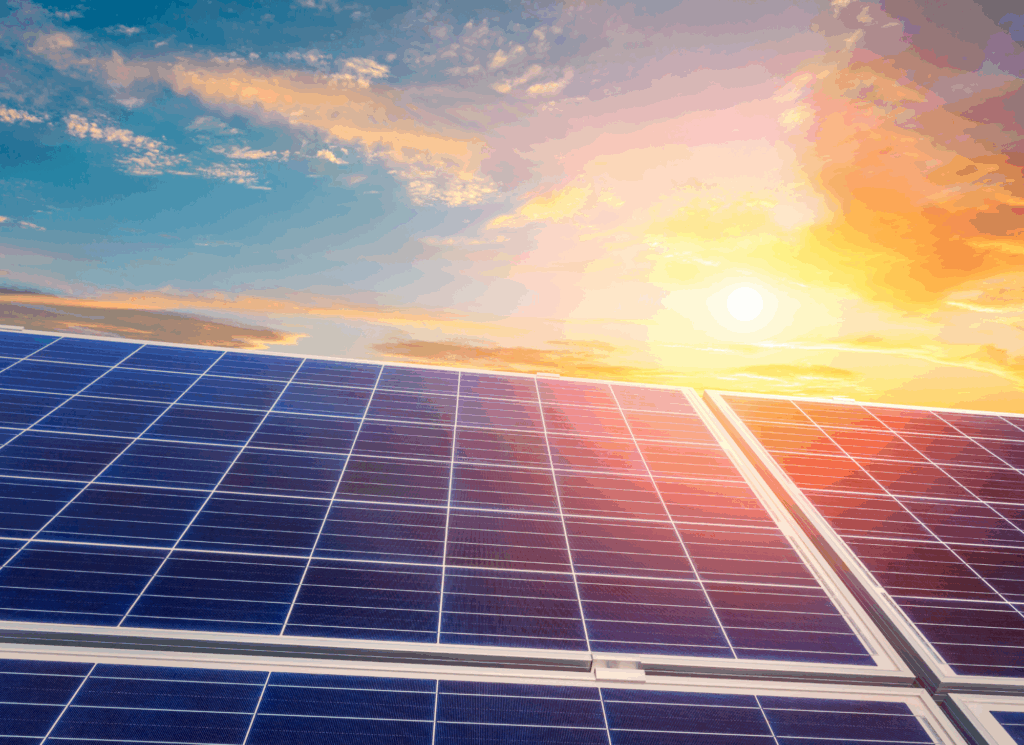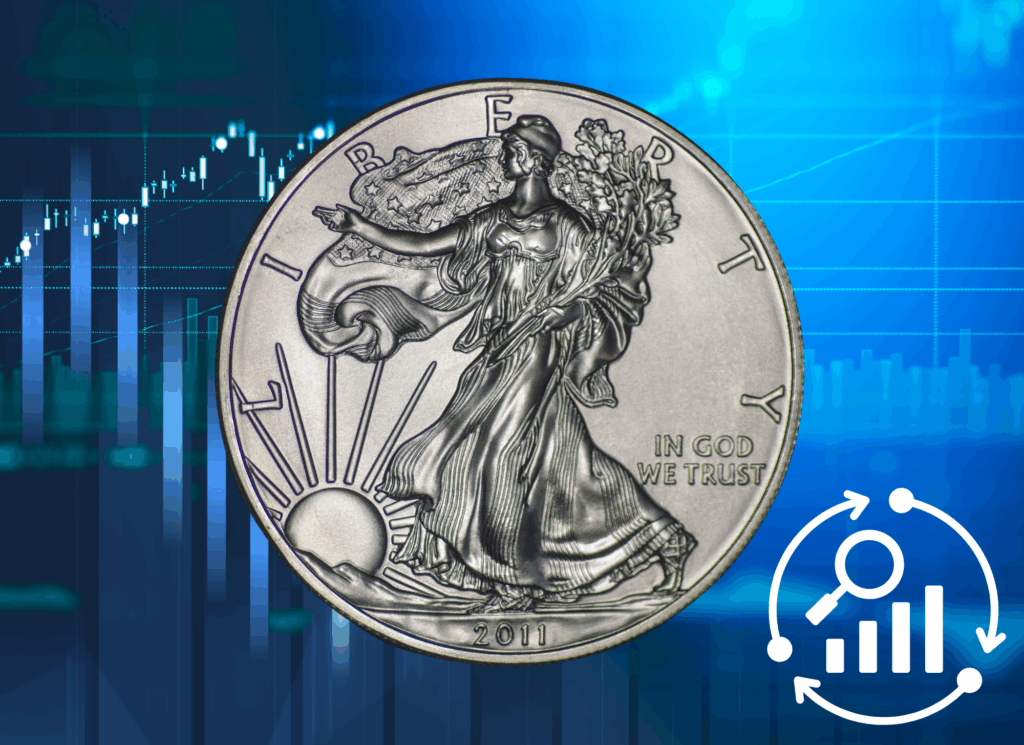Industrial applications consumed 680 million ounces of silver in 2024, representing 59% of total global demand. This marks a dramatic shift from just a decade ago when industrial uses accounted for roughly half that share. Silver has transformed from a traditional precious metal into an essential component of modern technology.
Silver’s unique properties make it irreplaceable across critical industries. The metal conducts electricity and heat better than any other element while offering natural antimicrobial characteristics and exceptional reflectivity. These qualities create persistent demand regardless of economic cycles.
Electronics, solar energy, electric vehicles, and medical devices now depend on silver for core functionality. Understanding these industrial applications reveals why demand continues accelerating even as mining production struggles to keep pace.
Why Silver Dominates Electronics Manufacturing

Superior Electrical Conductivity
Electronics manufacturing consumed 445 million ounces of silver in 2023, making it the single largest industrial application. Silver’s unmatched electrical conductivity makes it essential for printed circuit boards, semiconductors, and electrical contacts. No viable substitute exists for applications requiring maximum conductivity in minimal space.
The electronics sector now represents roughly one-third of total silver demand. This share continues growing as devices become more sophisticated and power-efficient designs require superior conductive materials. Silver enables the miniaturization that defines modern electronics.
Silver Content Across Consumer Devices
Every smartphone, laptop, and television contains silver in critical components. The proliferation of connected devices multiplies industrial demand far beyond traditional applications.
- Smartphones: 200-300mg of silver per device in circuitry and connections
- Laptops and tablets: 750mg in motherboards and interfaces
- Televisions: 1-2g per unit in display technology and processors
- Gaming consoles: 2-3g due to advanced graphics processing
- Servers: Higher concentrations supporting data center infrastructure
China produces more than 70% of global electronics, creating concentrated demand spikes around major product launches. Manufacturing cycles peak in Q2 and Q3 as companies prepare for holiday seasons, generating predictable consumption patterns in silver markets.
AI and Data Center Expansion
Data centers represent the fastest-growing electronics category for silver consumption. Cloud infrastructure, high-speed networking equipment, and thermal management systems all require silver’s superior performance characteristics. The rise of AI computing intensifies these requirements.
AI workloads demand more processing power and generate more heat than traditional computing. Silver’s combined electrical and thermal conductivity makes it essential for managing both challenges. Industry projections suggest data center silver consumption could increase by millions of ounces annually as AI infrastructure expands globally.
Solar Energy Drives Record Growth

Photovoltaic Technology Requirements
Solar panels absorbed 197 million ounces of silver in 2024, representing nearly one-fifth of total global demand. This figure has more than tripled since 2015 as renewable energy adoption accelerates worldwide. Each solar panel requires approximately 20 grams of silver in conductive paste applied to silicon wafers.
The silver creates electrical pathways that capture and transport energy generated by photovoltaic cells. Attempts to substitute copper or aluminum have consistently failed because these metals cannot match silver’s conductivity in the thin layers required for efficient panel design. Silver remains technically irreplaceable in current photovoltaic technology.
Global Solar Installation Trends
China dominates solar manufacturing and installation, accounting for nearly 90% of solar-related silver consumption in peak production years. The country’s renewable energy policies and manufacturing capacity make it the primary driver of photovoltaic silver demand.
Emerging markets now accelerate the trend. India targets 280 GW of solar capacity by 2030, while Southeast Asian nations collectively plan 150 GW of new installations. Annual panel production exceeds 300 million units, each requiring its share of the global silver supply.
Government policies worldwide increasingly mandate renewable energy transitions. These commitments translate directly into sustained silver demand as countries build solar infrastructure to meet climate targets and energy independence goals.
Long-Term Supply Concerns
Research from the University of New South Wales warns that solar production alone could consume 85-98% of available silver resources by 2050 at current growth rates. Panel recycling technology recovers approximately 85% of silver from decommissioned installations, but this still leaves significant gaps in supply availability.
The structural imbalance between accelerating solar demand and limited silver production creates long-term support for the metal’s value. As renewable energy becomes non-negotiable for developed and developing nations alike, silver’s role as a critical material intensifies.
Electric Vehicles Transform Automotive Demand

Silver Content by Vehicle Type
The automotive sector consumes approximately 85 million ounces of silver annually, driven by the rapid transition to electric powertrains. Silver appears in electrical connections, switches, membrane controls, and increasingly in battery management systems.
| Vehicle Type | Silver Content |
|---|---|
| Gas-powered vehicles | 15-28 grams |
| Hybrid vehicles | 18-34 grams |
| Battery electric vehicles | 25-50 grams |
Electric vehicles require nearly double the silver of conventional cars due to additional electrical systems and power management components. Every percentage point increase in EV market share translates to millions of additional ounces of industrial demand.
EV Market Acceleration
The International Energy Agency projects that 50% of all vehicles sold globally will be electric by 2035. Major manufacturers have committed billions to electrification programs, with production targets reaching tens of millions of units annually within this decade.
Current EV production already measures in the millions annually, and growth rates exceed traditional automotive industry expansion. Tesla, Volkswagen, GM, and Chinese manufacturers continue expanding capacity to meet surging consumer demand and regulatory requirements.
Charging Infrastructure Multiplier
Charging station deployment amplifies automotive silver demand beyond the vehicles themselves. Each fast-charging unit requires 1-2 kilograms of silver in power electronics and connections. Plans for millions of public charging installations by 2030 represent substantial additional consumption.
Emerging battery technologies may intensify silver requirements further. Solid-state battery prototypes in development potentially need up to 1 kilogram of silver per 100 kWh battery pack. If this technology reaches commercial scale, automotive applications could become silver’s dominant industrial category.
Medical Applications Provide Stable Demand

Antimicrobial Properties in Healthcare
Healthcare and medical technology consume approximately 30 million ounces of silver annually in applications largely immune to economic cycles. Silver’s natural antimicrobial properties make it valuable for infection control in hospital environments and medical devices.
The metal disrupts bacterial cell membranes and binds to proteins essential for microbial survival. This mechanism proves effective even against antibiotic-resistant strains, making silver increasingly important as traditional antibiotics face resistance challenges. Hospital surfaces, surgical instruments, and device coatings all utilize silver’s protective characteristics.
Medical Device Applications
Advanced wound care represents a rapidly growing application, with the market expanding at roughly 6% annually. Silver-containing dressings treat burns, surgical wounds, and chronic injuries by preventing infection while promoting healing. The effectiveness of these products drives consistent adoption across healthcare systems.
Catheters, stents, and implantable electronics incorporate silver alloys to prevent bacterial colonization and improve long-term device performance. Medical grade silver reduces infection rates and complications, creating value that justifies its cost in critical healthcare applications.
The silver nanoparticles market for healthcare applications shows particularly strong growth trajectories. These specialized materials enable new antimicrobial treatments and medical device innovations that weren’t possible with traditional silver compounds.
Noncyclical Demand Advantage
Healthcare silver consumption remains stable regardless of economic conditions or commodity price fluctuations. Hospitals and medical device manufacturers continue purchasing silver-based products because infection control and device performance cannot be compromised for cost savings.
This stability provides a reliable baseline for industrial demand even during periods when other sectors contract. Medical applications exemplify how silver’s unique properties create persistent demand that mining supply must continually satisfy.
Additional Industrial Applications
Brazing and Soldering Alloys
Industrial metal joining applications consumed silver at rates 3% higher in 2024 compared to the previous year. Brazing alloys containing silver join components in aerospace manufacturing, shipbuilding, HVAC systems, and plumbing installations. The strength and reliability of silver-brazed joints make the metal essential for critical connections.
Aerospace and defense applications particularly value silver brazing for components that must perform flawlessly under extreme conditions. Industry forecasts project continued growth in this segment as manufacturing activity expands globally.
Chemical Catalysts
Silver catalysts enable the production of ethylene oxide, a precursor for plastics, antifreeze, and detergents. The metal also catalyzes formaldehyde production used in textiles, adhesives, and building materials. These chemical processes consume silver that becomes embedded in catalyst substrates.
Chemical manufacturing represents steady industrial demand that scales with global economic activity. As developing nations industrialize and consumer goods production grows, catalyst applications continue expanding.
Water Purification Systems
Developing nations increasingly adopt silver-based water purification technologies. The metal’s antimicrobial properties prevent bacterial and algal growth in community water supplies, swimming pools, and hospital water systems. Silver filters require no chemical additives and maintain effectiveness over extended periods.
This application grows as populations gain access to modern sanitation infrastructure. Water purification represents both a humanitarian benefit and an industrial demand driver for silver.
Emerging Applications
New technologies continually find uses for silver’s exceptional properties. Several categories show particularly strong growth potential:
- Electromagnetic shielding: Protects sensitive electronics in 5G infrastructure and AI computing systems from interference
- 3D printing: Silver inks enable additive manufacturing of electronic circuits and conductive pathways
- Photographic and imaging: X-ray and medical imaging in developing markets maintain traditional silver halide uses
- Antimicrobial textiles: Clothing and fabrics incorporating silver nanoparticles resist odor and bacterial growth
Supply Deficit Creates Investment Opportunity
Structural Market Shortage
Silver markets recorded four consecutive annual deficits totaling 678 million ounces, equivalent to roughly ten months of global mining production. The 2024 deficit alone reached 149 million ounces, highlighting the growing gap between available supply and industrial consumption.
Mine production increased only 0.9% to 820 million ounces in recent years, constrained by geological limitations and the economics of silver extraction. Roughly 72% of mined silver comes as a byproduct of copper, lead, and zinc operations rather than primary silver mines. This means silver supply responds slowly to price increases since it depends largely on demand for other base metals.
The structural constraint creates persistent upward pressure on silver prices. Mining companies cannot simply ramp up silver production in response to industrial demand because extraction rates depend on unrelated metals markets.
Demand Growth Outpacing Supply
Solar panel manufacturing, electric vehicle production, and electronics fabrication all project continued growth through 2030 and beyond. These aren’t temporary trends but fundamental shifts in how humanity generates energy, transports people, and processes information.
Supply growth cannot match these demand trajectories. New silver mines require years to develop and face increasing environmental and permitting challenges. The gap between what industries need and what mines can produce continues widening.
Investment Vehicles for Silver Exposure
Investors seeking exposure to silver’s industrial demand story have several options. Physical silver coins and bars provide direct ownership of the metal with no counterparty risk. This approach appeals to those wanting tangible assets that benefit from both industrial demand and monetary value.
Silver ETFs offer liquidity and convenience for those preferring securities markets. Mining stocks provide leveraged exposure to silver prices but carry additional business risks. Self-directed IRAs can incorporate silver investments with potential tax advantages for retirement planning.
Many investors allocate 5-10% of their portfolios to precious metals including silver as a diversification strategy. The industrial demand profile differentiates silver from purely monetary metals, offering exposure to technology trends alongside traditional precious metal benefits. Those interested in broader precious metals strategy can explore why investors choose precious metals for portfolio diversification.
Silver’s Industrial Future
Silver’s transformation into an essential industrial commodity establishes demand fundamentals unlike traditional precious metals. The metal’s irreplaceability in electronics, solar energy, and electric vehicles creates structural consumption that mining production struggles to satisfy. These aren’t speculative applications but core technologies reshaping modern civilization.
Artificial intelligence infrastructure, renewable energy targets, and vehicle electrification all require silver in quantities that exceed historical demand patterns. Supply constraints from byproduct mining economics mean production cannot respond quickly to these trends. The resulting deficits position silver uniquely among industrial commodities.
Portfolio diversification strategies increasingly recognize silver’s dual nature as both precious metal and critical material. Those exploring allocation options can review how silver compares to gold for investment purposes. Industrial demand provides a foundation for value that extends beyond monetary considerations, linking silver’s performance directly to technological progress and economic development.
